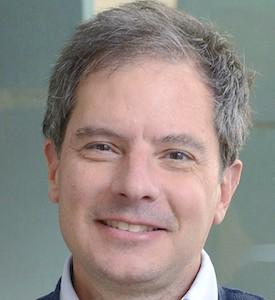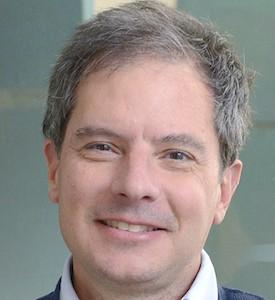
DALLAS – Feb. 16, 2016 – Researchers at UT Southwestern Medical Center have identified synthetic RNA and DNA that reverses the protein deficiency causing Friedreich's ataxia, a neurological disease for which there is currently no cure.
Friedreich's ataxia results from modifications to DNA sequences that prevent cells from producing enough of a needed protein called frataxin. The lack of frataxin can result in a variety of problems that include loss of muscle control, fatigue, vision or hearing impairment, slurred speech, and serious heart conditions.
Using synthetic RNA or DNA, researchers have identified a way to allow normal frataxin production to resume.
"The synthetic DNA or RNA prevents the mutant sequence from bending back and blocking the frataxin gene. This action activates the frataxin gene, which then makes frataxin RNA and protein at normal levels," said Dr. David Corey, Professor of Pharmacology and Biochemistry. "In addition, our approach is selective for targeting the frataxin gene FXN and does not affect other genes."
In contrast to the CRISPR genomic editing technique, which requires modifications to genes, the molecules in this study are synthetic. The DNA and RNA belong to classes of molecules that already are being used clinically, making development of a new therapy more straightforward, said Dr. Corey, who holds the Rusty Kelley Professorship in Medical Science.
For use in Friedreich's ataxia, the remaining challenge will be to adequately deliver the synthetic molecules to tissues that are affected by the disease, but those challenges are being addressed by existing clinical programs targeting Huntington's disease and spinal muscular atrophy, Dr. Corey said.
About one in 50,000 people have Friedreich's ataxia, and typical onset is between 5 and 18 years of age, according to the National Institute of Neurological Disorders and Stroke. The disease is caused by cells making too little of the protein frataxin, although the proteins that are made are considered normal.
"The problem arises because of a mutation within the frataxin gene FXN that does not code for protein. In this case, the mutation causes the synthesis of a longer piece of RNA. This longer sequence binds the DNA and gums up the works, blocking RNA production needed to produce the frataxin protein," Dr. Corey said.
The findings appear in the journal Nature Communications.
###
Other UT Southwestern authors include Dr. Masayuki Matsui, Assistant Instructor of Pharmacology, and Liande Li, research scientist in Pharmacology.
Support for the research came from RaNA Pharmaceuticals, the Robert A. Welch Foundation, the Friedreich's Ataxia Research Alliance and the National Institute of General Medical Sciences.
UT Southwestern has established the Peter O'Donnell Jr. Brain Institute, a comprehensive initiative dedicated to better understanding the basic molecular workings of the brain and applying these discoveries to the prevention and treatment of brain diseases and injuries.
About UT Southwestern Medical Center
UT Southwestern, one of the premier academic medical centers in the nation, integrates pioneering biomedical research with exceptional clinical care and education. The institution's faculty has included six who have been awarded Nobel Prizes since 1985. The faculty of almost 2,800 is responsible for groundbreaking medical advances and is committed to translating science-driven research quickly to new clinical treatments. UT Southwestern physicians provide medical care in about 80 specialties to more than 100,000 hospitalized patients and oversee approximately 2.2 million outpatient visits a year.
This news release is available on our home page at http://www.utsouthwestern.edu/home/news/index.html To automatically receive news releases from UT Southwestern via email, subscribe at http://www.utsouthwestern.edu/receivenews
Media Contact
Gregg Shields
[email protected]
214-648-3404
@UTSWNews
http://www.swmed.edu





